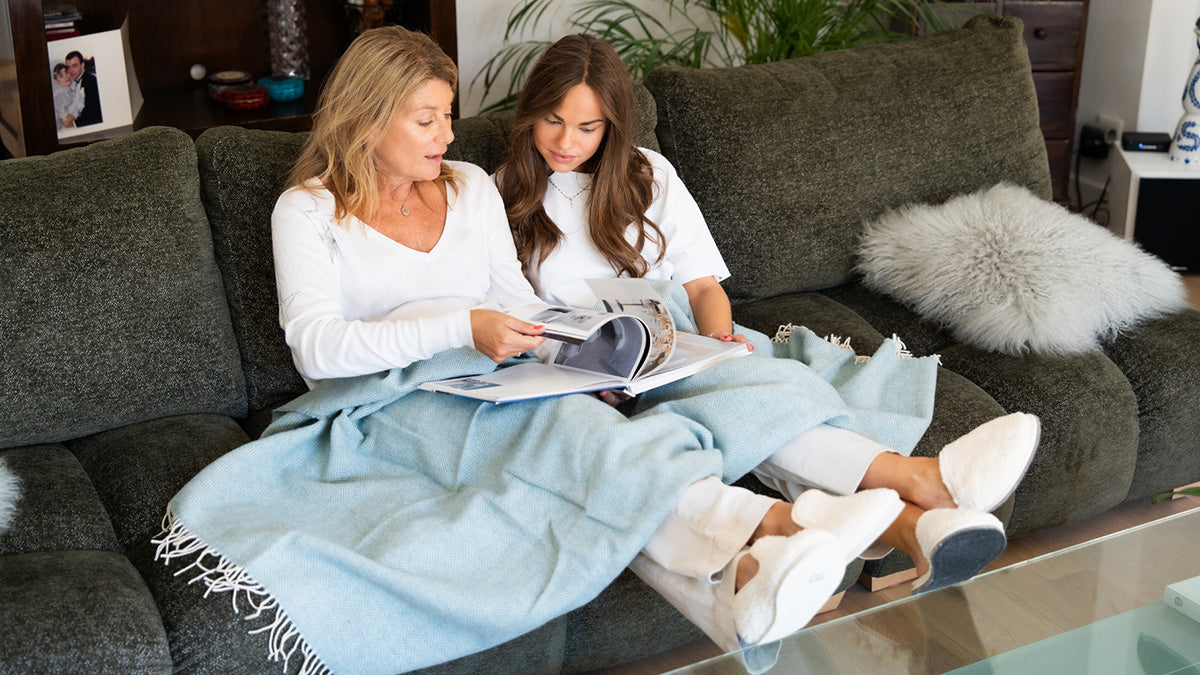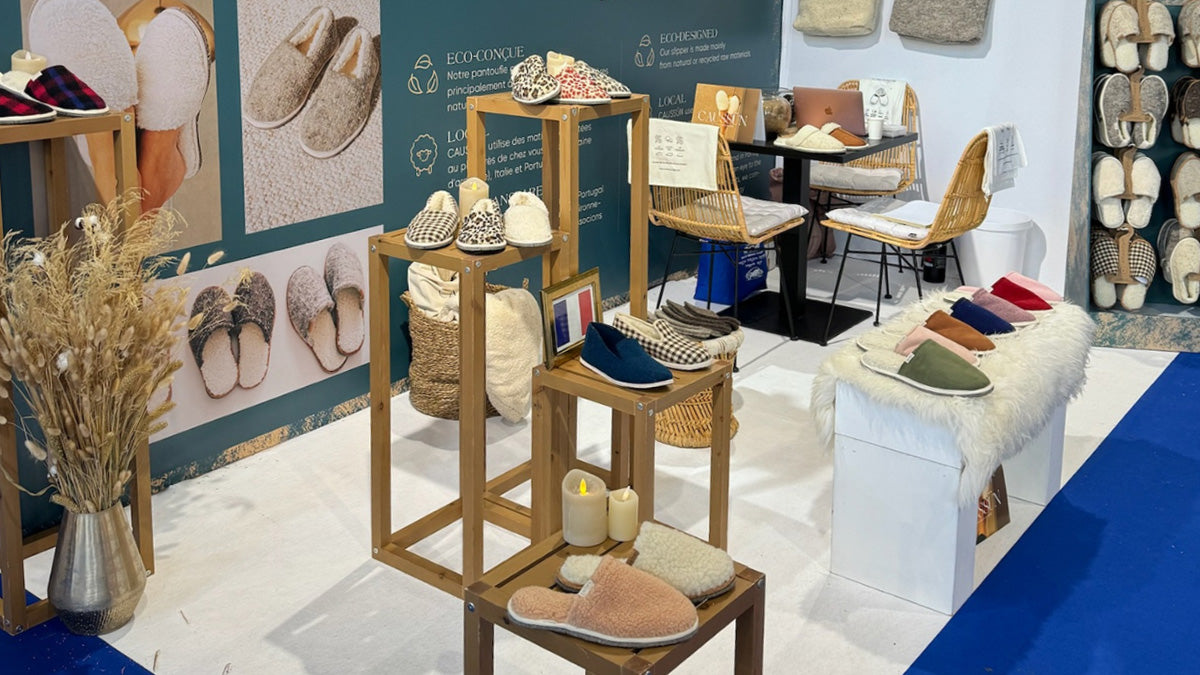
Things You Probably Didn't Know About Slippers
The Larousse dictionary defines the slipper as a “light, flexible, comfortable, often warm shoe, made for indoor use”. However, this has not always been the case: the slipper has not always been a shoe as such, nor an indoor shoe. Moreover, even today, the customs surrounding the slipper vary from one country to another.
Here are 5 stories about slippers that will change your perception of them.
The slipper is an oriental invention
The oldest slippers that have been found to date were discovered in Egyptian tombs dating back to the 2nd century. Originally from the Orient, slippers are thought to be a derivative of babouches and were used for a long time in the Eastern world before making their way to the West.
In fact, it was at the end of the Middle Ages that they reached Europe. It was then the peasants who would have benefited first, using them as socks to put on their wooden clogs for more comfort. This is how, little by little, slippers invited themselves into our homes, first used by women before gaining popularity with men.
The slipper has therefore not always been just an indoor shoe.
At one time, the word also referred to a shoe intended for outdoor use. Thus, for example, at the time of the kings of France, it was customary to wear one's finest slippers to attend court receptions!
As for France, it was in 1795 that the first slipper factory appeared on its lands, the Établissements Amos. Located in Alsace, they employed nearly 2,000 employees during their best years. However, they closed their doors for good in 1987, nearly two centuries after their creation, following competition that had become too strong.
Cinderella's Slipper May Not Have Been Glass After All

The slipper that Cinderella wears to go to the ball has been much talked about. Before being written down, the story of Cinderella was a tale that was passed down orally from generation to generation. However, some claim that, when it came time to put it on paper, Charles Perrault was the victim of a homophony in the French language: in reality the shoes were not made of glass but of vair, which is none other than gray squirrel fur.
There have been several studies on this issue. One looked at all the international versions of the tale, which comes to over 300 variations. The conclusion: only a handful of versions describe the slipper as being made of glass. A large number of versions claim it is made of gold, although others describe it as being made of silk or decorated with diamonds, among other things. Finally, some versions leave the debate aside by giving no details about the material of the slipper.
More recently, English students have demonstrated that, scientifically, Cinderella's glass slipper as depicted in the Walt Disney film could not exist . Indeed, the glass would make them too fragile and unlikely to support Cinderella's steps. In order to withstand the heroine's weight, the shoes would have to have a heel of just over 1cm, and it would still be difficult to walk and dance in them.
Cinderella's slipper is therefore only a symbol, although it was chosen with care. Indeed, not only does the fact that it is made of glass make it impossible for anyone with a larger shoe size to fit into it, but it also gives a delicate image to Cinderella, who would be the only one who can use them without breaking them.
In any case, one thing is certain: Cinderella's slipper is far from resembling those we know today, like the Caussün and which we only wear at home!
The charentaise, the French slipper, was created to be slipped into clogs
Invented in the 17th century, the charentaise is a type of French slipper originating from the Charente region. However, while its name is known to all, few know that it has not always had the same shape as it is known today.
In fact, it was originally created to be used with clogs, continuing the practices of the Middle Ages. Made from scraps of felt used in paper mills, it looked more like a large, comfortable sock that kept your feet warm when wearing clogs.
It was only at the beginning of the 20th century that a local shoemaker decided to add a rigid sole, thus giving rise to the current model.
It is also said that the charentaises were nicknamed “the silent ones” because they allowed one to move around in silence. Thus, for example, the valets used them to walk in the bedroom of their masters without waking them up.
In Japan, there are special slippers for toilets.
In many countries, such as Russia and the Czech Republic, it is customary to take off your shoes when entering a house, whether it is your own or someone else's.
However, the Japanese go even further. In fact, they all have their own slippers to put on at the entrance of their house, and usually have slippers for guests. Their entrance hall, which is the place where one takes off one's shoes, is called "genkan", a term originally used to designate the entrance of a temple. It is often separated from the rest of the house by a step. Shoes are only accepted before the step, and it is therefore imperative to remove them to pass the step.
When they are ordered, the Japanese have the habit of placing their shoes with their backs to the step, towards the front door. This makes it easy to put them on when it is time to go out. Similarly, slippers are placed on the step, with their backs to the shoes, so that they can be quickly put on without ever touching the area reserved for shoes.
But that's not all: when it comes to using the toilet, it is important to change your slippers. In fact, the Japanese have slippers designed specifically for this part of the house .
Moreover, the home is far from being the only place where it is mandatory to take off your shoes. This is also the case at the doctor's office, but also sometimes at school, in restaurants or in the fitting rooms of stores. In this case, you will always find lockers at the entrance in which to put your shoes during your visit.
Better yet, many offices ban shoes, forcing employees to work in slippers. Which brings us to our next point…
Working in slippers would make us more productive
Working in slippers would increase our well-being at the office. Indeed, not only would it increase our comfort, but it would also improve our relationships with our colleagues, by bringing us closer and allowing us to know them better. We would then be happier, and who says better mood means better efficiency in general!
This is in any case what the company Shoegarden and the digital communication agency Camarey claim, but a serious study on the subject still needs to be done. Perhaps you could ask for one to be carried out in your company?
Caussün is the first eco-responsible slipper that offers customization services for businesses.
And you, are you more of a shoes or slippers person at home?





Leave a comment
This site is protected by hCaptcha and the hCaptcha Privacy Policy and Terms of Service apply.